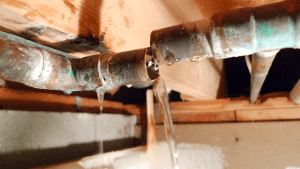Guide To Water Leak Discovery At Home
Guide To Water Leak Discovery At Home
Blog Article
The content down below on the subject of Hacks to detect leaks is particularly captivating. Check it out yourself and see what you think of it.

Early detection of dripping water lines can alleviate a prospective calamity. Aside from conserving you cash, it will certainly lessen the aggravation and also aggravation. The moment you find a leak, calling your plumber for repair services is the best remedy. Some small water leakages might not be visible. If you can not spot it with your nude eyes, here are some hacks that aid.
1. Examine the Water Meter
Checking it is a surefire method that helps you find leaks. If it moves, that indicates a fast-moving leak. This indicates you may have a sluggish leakage that might also be below ground.
2. Examine Water Usage
Examine your water costs and track your water usage. As the one paying it, you need to discover if there are any kind of discrepancies. If you identify sudden changes, regardless of your consumption being the same, it indicates that you have leaks in your plumbing system. Keep in mind, your water costs must drop under the same range monthly. An unexpected spike in your expense indicates a fast-moving leakage.
Meanwhile, a constant boost every month, despite the same behaviors, shows you have a slow-moving leakage that's also gradually rising. Call a plumber to thoroughly inspect your residential or commercial property, particularly if you feel a warm area on your floor with piping underneath.
3. Do a Food Coloring Examination
When it comes to water intake, 30% comes from commodes. If the color in some way infiltrates your dish during that time without flushing, there's a leakage in between the container and bowl.
4. Asses Exterior Lines
Don't fail to remember to examine your exterior water lines too. Should water seep out of the connection, you have a loosened rubber gasket. One little leak can waste lots of water and surge your water costs.
5. Inspect and also Examine the Scenario
Homeowners should make it a practice to inspect under the sink counters as well as also inside cabinets for any type of bad odor or mold growth. These 2 warnings suggest a leak so timely interest is required. Doing regular evaluations, even bi-annually, can save you from a significant issue.
A lot more notably, if you understand your home is already old, maintain a watchful eye on your heaters, hoses, pipes etc. Look for discolorations and damaging as a lot of pipes and also home appliances have a life span. They will additionally naturally degrade due to deterioration. Do not wait for it to escalate if you think dripping water lines in your plumbing system. Call a specialist plumber right away so you do not wind up with a dreadful mess in your house.
Early discovery of dripping water lines can minimize a prospective disaster. Some little water leakages might not be visible. Examining it is a guaranteed means that helps you uncover leaks. One little leak can squander loads of water and also spike your water costs.
If you presume leaking water lines in your plumbing system, don't wait for it to escalate.
WARNING SIGNS OF WATER LEAKAGE BEHIND THE WALL
PERSISTENT MUSTY ODORS
As water slowly drips from a leaky pipe inside the wall, flooring and sheetrock stay damp and develop an odor similar to wet cardboard. It generates a musty smell that can help you find hidden leaks.
MOLD IN UNUSUAL AREAS
Mold usually grows in wet areas like kitchens, baths and laundry rooms. If you spot the stuff on walls or baseboards in other rooms of the house, it’s a good indicator of undetected water leaks.
STAINS THAT GROW
When mold thrives around a leaky pipe, it sometimes takes hold on the inside surface of the affected wall. A growing stain on otherwise clean sheetrock is often your sign of a hidden plumbing problem.
PEELING OR BUBBLING WALLPAPER / PAINT
This clue is easy to miss in rooms that don’t get much use. When you see wallpaper separating along seams or paint bubbling or flaking off the wall, blame sheetrock that stays wet because of an undetected leak.
BUCKLED CEILINGS AND STAINED FLOORS
If ceilings or floors in bathrooms, kitchens or laundry areas develop structural problems, don’t rule out constant damp inside the walls. Wet sheetrock can affect adjacent framing, flooring and ceilings.
https://www.servicemasterbyzaba.com/blog/how-to-detect-water-leakage-in-walls/

I'm very eager about Top leak detection hacks and I am hoping you appreciated our post. Sharing is good. You just don't know, you may very well be helping someone out. I recognize the value of reading our article about Hacks to detect leaks.
Report this page